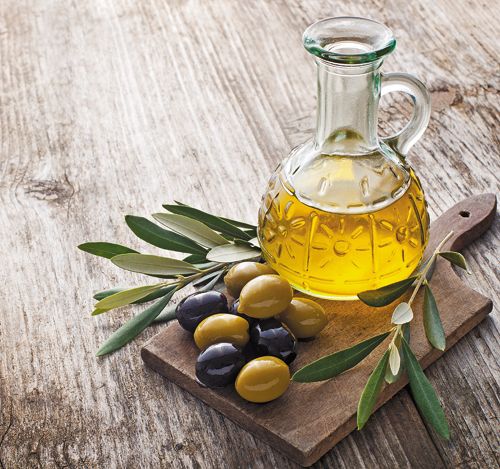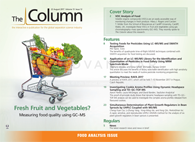Novel Metabolomics GC Method for Olive Oil Analysis
A method to determine the quality of olive oil has been developed using a novel atmospheric pressure chemical ionization (APCI) source in combination with gas chromatography (GC) coupled to hybrid quadrupole time-of-flight mass spectrometry (QTOF-MS) and a metabolomics strategy.
Photo Credit: DUSAN ZIDAR/Shutte

A method to determine the quality of olive oil has been developed using a novel atmospheric pressure chemical ionization (APCI) source in combination with gas chromatography (GC) coupled to hybrid quadrupole time-of-flight mass spectrometry (QTOF-MS) and a metabolomics strategy (1).
Olive oil quality is divided into three categories: extra virgin, virgin, or lampante, with the latter not being recommended for consumption. This is typically decided by testers who establish what the olive oil should be classified as by a “PANEL TEST”, which classifies the oils according to two main properties: defects and positive attributes.
PANEL TEST methodology can be categorized as subjective, because the opinion of testers may vary, leading to misclassification of an oil and the inherent problems that this can cause, such as economic losses, commercial issues, and fraud. A more objective alternative to this process would be the use of a chromatographic technique coupled to MS, which would classify the oil based upon chemical composition of the volatile fraction of the olive oil samples.
Researchers developed a GC–APCI–QTOF-MS method to obtain the chemical profile of olive oil volatile compounds and found that utilizing a metabolomics approach enabled a more objective decision for olive oil classification. Extraction prior to analysis was carried out by a purge and trap (P&T) technique.
The developed method was sensitive enough to obtain a considerable number of resolved chromatographic peaks for volatile compounds. Researchers also highlighted the increased sensitivity an APCI source with water as modifier offered when compared to the traditional electron ionization (EI) sources. Further research is required to improve
the classification method, to document every possible combination of defects and positive attributes. However, the current methodology, with an overall accuracy of 70%, can complement an official PANEL TEST. - L.B.
Reference
- C. Sales, M.I. Cervera, R. Gil, T. Portolés, E. Pitarch, and J. Beltran, Food Chem.216, 365–373 (2016).

Analytical Challenges in Measuring Migration from Food Contact Materials
November 2nd 2015Food contact materials contain low molecular weight additives and processing aids which can migrate into foods leading to trace levels of contamination. Food safety is ensured through regulations, comprising compositional controls and migration limits, which present a significant analytical challenge to the food industry to ensure compliance and demonstrate due diligence. Of the various analytical approaches, LC-MS/MS has proved to be an essential tool in monitoring migration of target compounds into foods, and more sophisticated approaches such as LC-high resolution MS (Orbitrap) are being increasingly used for untargeted analysis to monitor non-intentionally added substances. This podcast will provide an overview to this area, illustrated with various applications showing current approaches being employed.
Using Chromatography to Study Microplastics in Food: An Interview with Jose Bernal
December 16th 2024LCGC International sat down with Jose Bernal to discuss his latest research in using pyrolysis gas chromatography–mass spectrometry (Py-GC–MS) and other chromatographic techniques in studying microplastics in food analysis.
The Use of SPME and GC×GC in Food Analysis: An Interview with Giorgia Purcaro
December 16th 2024LCGC International sat down with Giorgia Purcaro of the University of Liege to discuss the impact that solid-phase microextraction (SPME) and comprehensive multidimensional gas chromatography (GC×GC) is having on food analysis.